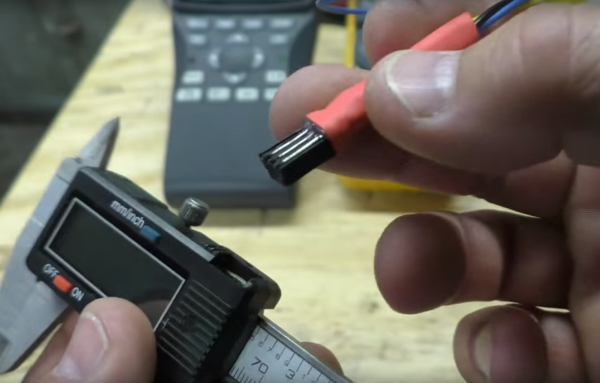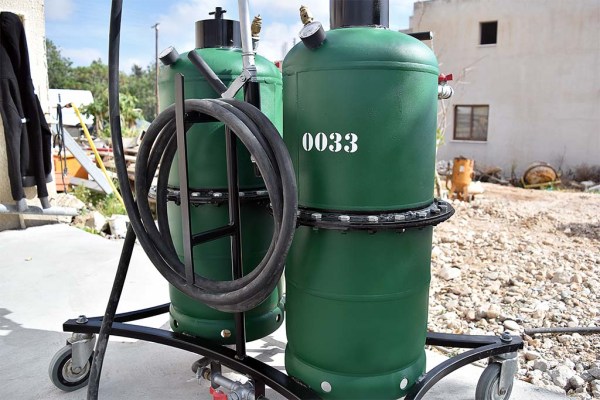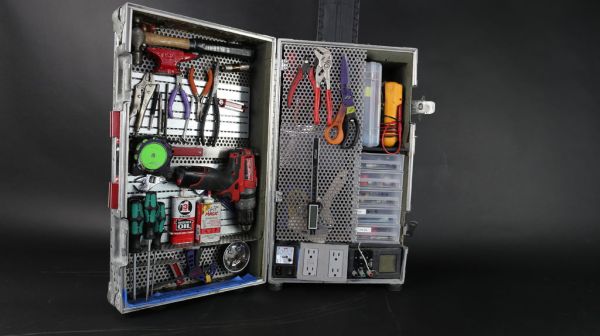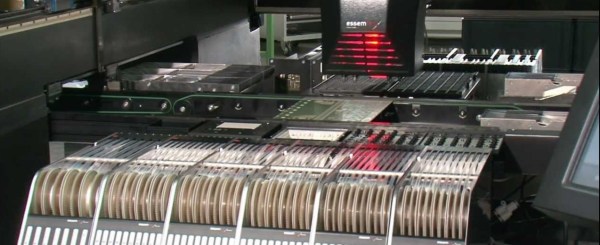If your shop is anything like mine, you’ve got a large selection of colorful cans claiming to contain the best and absolutely only lubricant you’ll ever need. I’ve been sucked in by the marketing more times than I care to admit, hoping that the next product will really set itself apart from the others and magically unstick all the stuck stuff in my mechanical life. It never happens, though, and in the end I generally find myself reaching for the familiar blue and yellow can of WD-40 for just about every job.
Tool Hacks3036 Articles
Improved Digital Caliper Interfacing, Including 3D Printed Connector
[MakinStuff] wrote in to let us know about a project he did for new and improved interfacing to the ubiquitous cheap Chinese digital calipers. Interfacing to this common caliper model is well-trod ground, but his project puts everything about interfacing and reading the data in one place along with some improvements: a 3D printed connector that makes mating to the pads much more stable and reliable, 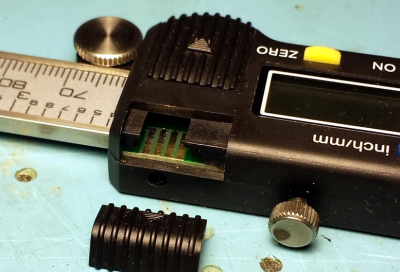 a simple interface circuit for translating the logic levels, and an interrupt-driven sample Arduino sketch to read the data. Making the sketch interrupt-driven means the Arduino never sits and waits for input from the calipers, making it easier have the Arduino do other meaningful work at the same time, ultimately making it easier to incorporate into other projects.
a simple interface circuit for translating the logic levels, and an interrupt-driven sample Arduino sketch to read the data. Making the sketch interrupt-driven means the Arduino never sits and waits for input from the calipers, making it easier have the Arduino do other meaningful work at the same time, ultimately making it easier to incorporate into other projects.
The connector has spaces to insert bare wires to use as contacts for the exposed pads inside the calipers. Add a little hot glue and heat shrink, and you’ll never have to fiddle with a hacked-together connection again.
This common caliper model has been hacked and re-purposed in interesting ways. We’ve seen them used as a Digital Read Out (DRO) on a lathe as well as being given the ability to wirelessly log their data over Bluetooth.
Continue reading “Improved Digital Caliper Interfacing, Including 3D Printed Connector”
Propane Tanks Transformed Into Extreme Sandblaster
The [Make It Extreme] team has been racking up the builds lately, and a lot of them are heavy with metalworking. When you’re doing that kind of work, and you put as much care into finishing your builds like they do, it’s a good idea to have access to a sandblaster. So naturally, they built a really nice one.
We’ve featured a couple of [Michalis Mavros] and team’s build recently; you’ll no doubt recall this viciously effective looking spot welder and a sketchy angle grinder cum belt sander. The sandblaster build, centered as it is around scrap propane tanks, has some lethal potential, but luckily the team displaced any remaining gas from the tanks with water before doing any cutting. The design allows for a lot of sand in the tanks, with plans to provide a recycling system for the grit, which is a nice touch. And it works great – they even used it to clean it up before final finishing in the trademark [Make It Extreme] green and black paint job.
What we really like about the video, though, is that it’s a high-speed lesson on metalworking techniques. There’s a ton to learn here about all the little tricks needed to bring a large-scale metalworking project to fruition. It also demonstrates that we really, truly need a plasma cutter and a metalworking lathe.
Continue reading “Propane Tanks Transformed Into Extreme Sandblaster”
Taming A Variac With A Thermistor
The folks at TOG, Dublin Hackerspace, have a large variac. A variac is a useful device for testing some fault conditions with AC mains powered equipment, it allows an operator to dial in any AC output voltage between zero, and in the case of TOG’s variac, 250V.
Their problem was with such a magnificent device capable of handling nearly 3KW, it presented an inductive load with a huge inrush current at power-on that would always take out the circuit breakers. Breakers come with different surge current handling capabilities, evidently their building is fitted with the domestic rather than the industrial variants.
Their solution was a simple one, they fitted an NTC surge limiter in series with the variac input. This is a thermistor whose resistance falls with temperature. Thus on start-up it presented an extra 12 ohm load which was enough to keep the breaker happy, but soon dropped to a resistance which left the variac with enough juice.
This is a simple fix to a problem that has faced more than one hackerspace whose imperfect lodgings are wired to domestic-grade spec. In a way it ties in neatly with our recent feature on mains safety; making the transformer no longer a pain to use means that it is more likely to be used when it is needed.
Via: TOG, Dublin Hackerspace.
The Ultimate Traveler’s Toolkit
Looking for a better way to store your tools during transportation? While we certainly wouldn’t recommend trying to check this thing as a carry-on (oh and prepare for it to be searched even in checked luggage), this clever use of a road case is probably one of the best tool boxes we’ve ever seen.
This is [Robb Godshaw’s] tool box. It’s been developed over the past five years as he’s become a skilled maker. You might remember him best from his ironic project “Why are we limited to C-Clamps?” — a clamp offering of the entire alphabet.
He also picked up the road case close to home for Hackaday — at Apex Electronics Surplus in LA — one of our favorite places to find parts. But the most clever part of the project is the way he’s divided the case for different tools.
Tools Of The Trade – Component Placing
Recently we started a series on the components used to assemble a circuit board. The first issue was on dispensing solder paste. Moving down the assembly line, with the paste already on the board, the next step is getting the components onto the PCB. We’re just going to address SMT components in this issue, because the through hole assembly doesn’t take place until after the SMT components have gone through the process to affix them to the board.
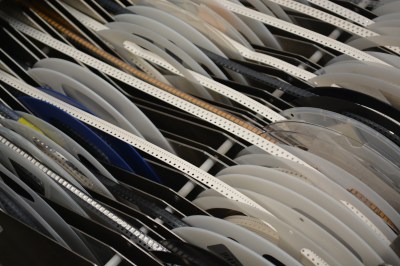
SMT components will come in reels. These reels are paper or plastic with a clear plastic strip on top, and a reel typically has a few thousand components on it. Economies of scale really kick in with reels, especially passives. If you order SMT resistors in quantities of 1-10, they’re usually $.10 each. If you order a reel of 5000, it’s usually about $5 for the reel. It is cheaper to purchase a reel of 10 kOhm 0603 resistors and never have to order them again in your life than it is to order a few at a time. Plus the reel can be used on many pick-and-place machines, but the cut tape is often too short to use in automated processes.
An Affordable Ultrasonic Soldering Iron
One of the most interesting facets of our community of hackers and makers comes from its never-ending capacity to experiment and to deliver new technologies and techniques. Ample demonstration of this came this morning, in the form of [Hunter Scott]’s Hackaday.io project to create an ultrasonic soldering iron. This is a soldering technique in which the iron is subjected to ultrasonic vibrations which cavitate the surface of the materials to be soldered and remove any oxides which would impede the adhesion of the solder. In this way normally unsolderable materials such as stainless steel, aluminium, ceramic, or glass can be soldered without the need for flux or other specialist chemicals. Ultrasonic soldering has been an expensive business, and [Hunter]’s project aims to change that.
This iron takes the element and tip from a conventional mains-powered soldering iron and mounts it on the transducer from an ultrasonic cleaner. The transducer must be given an appropriate load which in the case of the cleaner is furnished by a water bath, or it will overheat and burn out. [Hunter]’s load is just a soldering iron element, so to prevent transducer meltdown he keeps the element powered continuously but the transducer on a momentary-action switch to ensure it only runs for the short time he’s soldering. The project is not quite finished so he’s yet to prove whether this approach will save his transducer, but we feel it’s an interesting enough idea to make it definitely worth following.
This is the first ultrasonic soldering project we’ve featured here at Hackaday. We have however had an ultrasonic plastic welder before, and an ultrasonic vapour polisher for 3D prints. It would be good to think this project could spark a raft of others that improve and refine DIY ultrasonic soldering designs.


